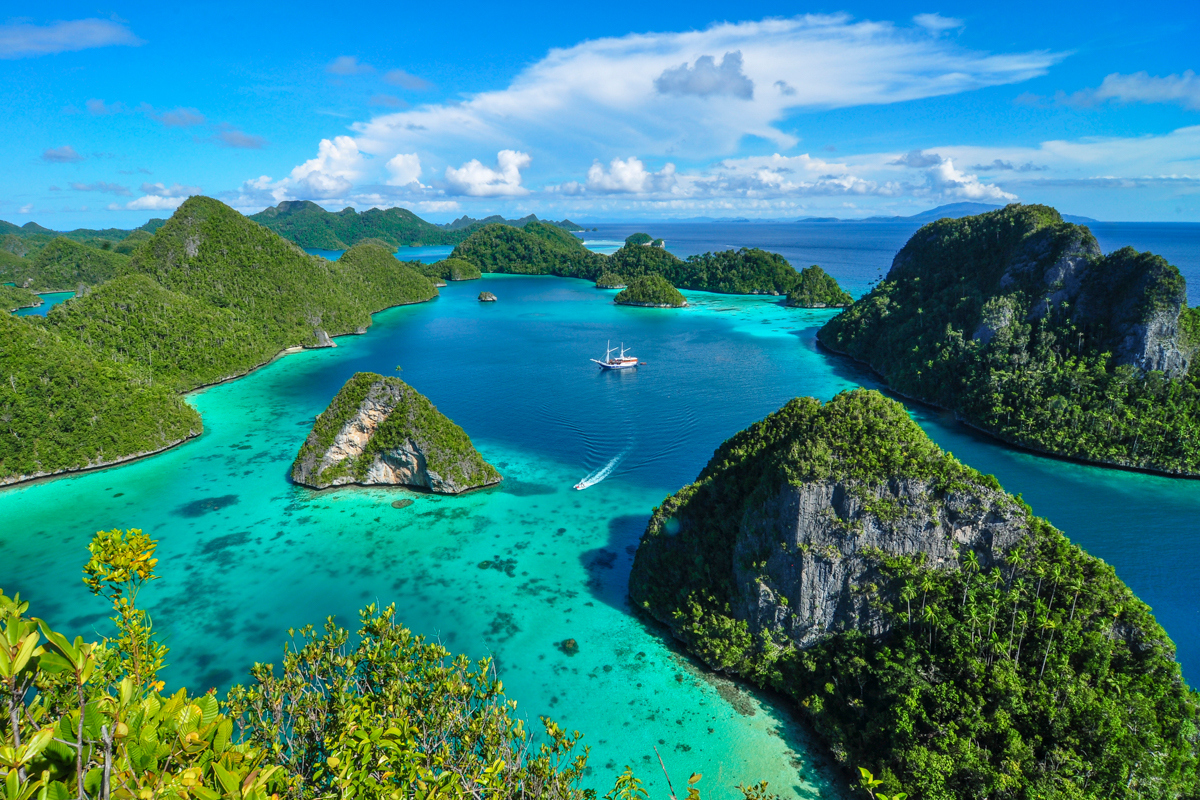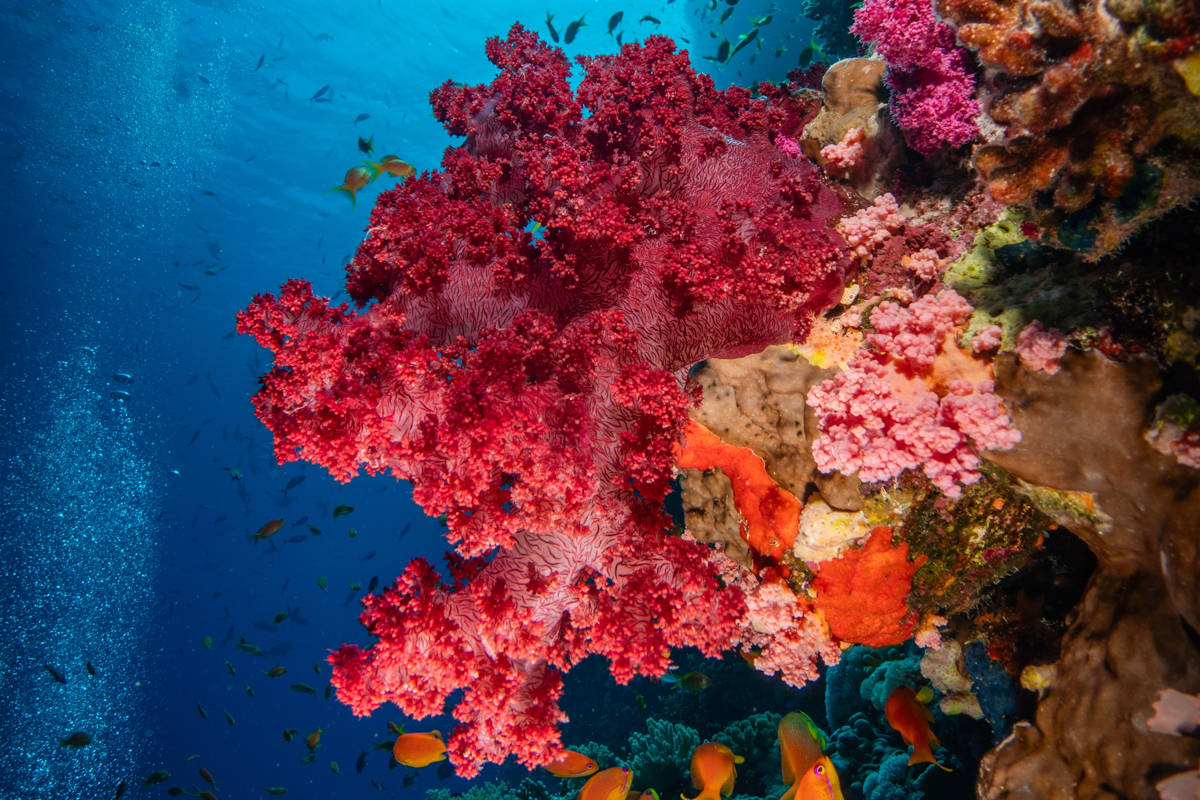- More More
- Blog
- Inspire me
- Groups
- Offers More
- Dive Courses More
- Liveaboards
More

Liveaboard Trips
On-board accommodation offering the opportunity to live right over the dive sites and to experience secluded dives...
Diving regions...
- LATEST AVAILABILITY BY REGION
- Red Sea availability
- Maldives availability
- Indonesian availability
- Socorro Mexico availability
- Galapagos availability
- ALL LIVEABOARD DIVING REGIONS
- Bahamas
- Bikini Atoll
- Caribbean
- Cocos Island
- Destinations
MoreDIVING REGIONS...
Our Top destinations....Why not try....
Raja Ampat
Raja Ampat, the most biodiverse region on Earth, covers a vast area, and a liveaboard is the best way to experience everything the area has to offer, with itineraries offered from seven through to 12 nights in duration.
The region of Raja Ampat in Indonesia is all about diversity - not only diversity of species, but also of dive sites. There are some areas where soft corals and sea fans dominate, others with an amazing range of hard corals, seagrass beds, mangroves, shallow reefs, drop-offs, caves, black sand, white sand. Then there are the fish, lots of them, in more shapes and sizes than anywhere else in the world. Not only are there loads of fish, but all the levels of the food chain are well represented - from pygmy seahorses to top predators.
The reefs in Raja Ampat just buzz with life! Manta rays, wobbegong sharks and epaulette sharks can all be found in the waters here. Raja Ampat is huge, 50,000 sq km, with hundreds of islands and an astounding diversity of habitats, which translates to wildly different diving experiences from pelagic drift dives to magic muck dives and even some habitats that are special to Raja Ampat such as clear water mangroves with corals growing right next to them. There are thousands of potential dive sites. Exploration is still continuing, and on every trip there are chances for new and amazing discoveries.


ITINERARY HIGHLIGHTS
- Explore the legendary Dampier Strait for beautiful corals and magical marine life
- Head south to the marvel at the wonderful soft coral gardens of Misool
- Marvel at everything from mantis shrimps to manta rays
- Experience a multitude of marine habitats, from mangroves to plunging drop offs
Some of the dive sites you may visit on your liveaboard include:
Batanta Island: The southwest coast of Batanta is known for sheltered black sand bays and critters – a stark contrast to the vibrant and dynamic reefs Raja Ampat is generally famous for. Depending on the weather and tidal conditions we choose from sites such as "Happy Ending", "Reflections", "Algae Patch" and "Happy Ending Rocks!" Known for its muck diving, there is really nothing that cannot be seen here along the dark sand slopes. Mimic octopus, wonderpus, inimicus, snake eels, dragonets, flasher wrasse and much more.
The Dampier Strait: The best known dive sites are Cape Kri, Sardine Reef, Chicken Reef, Mioskon, Blue Magic, Mike's Point, Manta Sandy, Arborek Jetty, Mangrove and Citrus Ridge. All the dive sites around the Strait are known for the huge amount of schooling fish; barracudas, bigeye trevallies, oceanic triggerfish, spadefish, surgeonfish, and snappers. Apart from schooling fish, this is an area where we get to see blacktips, whitetips, and wobbegongs sharks.
Some of the best manta dives are here at Manta Sandy and Blue Magic. Manta Sandy is a sandy slope with several bommies that the mantas use as a cleaning station. Blue Magic is a small pinnacle where giant mantas congregate for cleaning. Some of the best mangrove dives are also located in the Strait, around the islands of Yanggefo and Gam.
The area is also well known for the bommies found in shallow areas of the reefs. Some of these bommies are covered with beautiful soft corals and host a profusion of glassfish. Of course, we can't forget the dive sites in some of the local villages, where the pillars of the jetties are covered in soft corals and small critters.
Misool: The most southern island in Raja Ampat is surrounded by several hundred small islands and rocks. Some of the nicest soft coral reefs in the world are located in Misool. It is impossible to describe only several dive sites, since there are literally hundreds of them. Every year new dive sites are discovered around Misool. Many of the dive sites around Misool are just as fishy as the ones from the Dampier Strait, with the same schools of barracudas, spadefish, pinjalo snappers, and zillions of fusiliers. But Misool is also a great macro place. It is known as the kingdom of the pygmy seahorses, as well as having small allied cowries in the gorgonian seafans, and numerous nudibranches going about their lives.
Within each of the following areas, there are always several dive sites. Wagma, Farondi, Balbulol, Sagof, Daram, Yellit, Boo, Warakaraket, Fiabacet, Kalig, Wayilbatan, Wayil, Pele and Nampele (Blue Water Mangroves).
Please note: Only itineraries specifically visiting southern Raja Ampat will visit the Misool region.
Islands of Kawe: One of Raja Ampat’s true gems, the Islands of Kawe is loaded with some remarkable diving. The absence of boats, land based resorts and home stays only adds to the serenity of these equatorial islands. Diving at Eagle Rock, you’re likely to spot mantas using the many cleaning stations or feeding on the surface in the channel between two of the islands. The deep end of the site is a labyrinth of gigantic boulders covered with an array of citrus coloured soft coral, where wobbegong sharks like to hide.
Black Rock is well known for its profuse fish life and it’s fields of ancient black coral bushes. Chango is a small rock island/pinnacle with just a couple of grubby trees on top, but what Chango lacks in its surface appeal, it more than makes up for with in its underwater attractions. Mega swarms of big-eye jacks wrap themselves around you as you explore the magnificent terrain below, while schools of barracuda, batfish and penjalo snapper abound. All round the site huge boulders have piled up creating massive tunnels and swim throughs which at times hard to locate as they tend to be full of fish!
Pulau Wayilbatan & Wayil & Pulau Kalig: Both sites offer stunning scenery and a great atmosphere for wide angle photography. Underhangs and crevices filled with soft corals along the walls. Lionfish & colourful scorpion fish also make fantastic subjects against the clear blue water.
Alyui Bay: The sea is, once again, full of life with big schools of sweetlips, and fusiliers. White tip sharks sleep under the big rocks, and pygmy seahorses can be found. If you are lucky there may be dolphins in the area so make sure to keep an eye out.
Wajag: Zodiac excursions through the labyrinth will provide breathtaking images that will last a lifetime. Underwater, the landscape is quite different with Jamur Selatan, Jamur Tengan & Utara rising up in the sea like mushrooms. With an agreeable current, you can easily dive around them. At times, the currents from the Antarctic bring cool water and huge schools of jackfish, tuna, rays and even blue marlins!
Your liveaboard itinerary will vary depend on several factors including, but not limited to, weather, diving ability of guests & the number of other boats already present at the various dive sites.
EXPERIENCE REQUIRED: You must be an Advanced Open Water diver or equivalent and have logged a minimum of 30 dives to join this safari.



